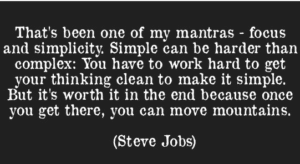 If you are new to trading or struggling to keep your account above water, growing your trading account into something respectable can seem like a daunting task. Too often, when you search for information on how to build your trading account, you don’t find any type of methodical guide that you can follow nor practical information to assist you. What you need is some practical and honest insight into what it takes to build a trading account from the ground up.
If you are new to trading or struggling to keep your account above water, growing your trading account into something respectable can seem like a daunting task. Too often, when you search for information on how to build your trading account, you don’t find any type of methodical guide that you can follow nor practical information to assist you. What you need is some practical and honest insight into what it takes to build a trading account from the ground up.
In this post, we will lay out some guidelines that will help you build your trading account and that will remove a lot of the “mystery” of what it takes to start growing your trading account.
1. Stop trying so hard to turn your small account into a big one
Trading is appealing to many because of the potential to earn quick money. The desire to turn a small amount into a large sum attracts people to the markets, but this mindset often leads to failure. Traders with small accounts often have a “small account mentality” that causes them to struggle and fail to make profits.
On the other hand, traders with larger accounts are more relaxed and patient. They do not feel the same pressure to constantly trade and make money. This allows them to make profits faster and more consistently than those with a small-account mentality.
Feeling the need to make money quickly actually causes traders to lose money. Emotional and impulsive trading decisions result from the pressure to earn profits quickly. On the other hand, logical trading decisions come from a clear and relaxed mind.
If you trade a small account well, making a solid return over time, you will naturally attract more money. Investors will see your success as a valuable asset and be more likely to fund your trading.
To build your trading account, it is important to trade with discipline and patience. Follow a logical strategy and avoid forcing trades. This creates positive habits and a strong foundation for long-term success. Traders who make quick profits from poor habits and greedy behavior often lose their earnings just as quickly.
2. Focus on the “forest”, not the “trees”
 It’s an understatement to say that traders tend to overemphasize the importance of each individual trade. They often treat every trade as if it’s more significant than it really is, and if they’ve risked too much on that trade, it can become even more important than it should be. However, it’s crucial to understand that your trading success isn’t determined by any one trade, but by a series of trades over time.
It’s an understatement to say that traders tend to overemphasize the importance of each individual trade. They often treat every trade as if it’s more significant than it really is, and if they’ve risked too much on that trade, it can become even more important than it should be. However, it’s crucial to understand that your trading success isn’t determined by any one trade, but by a series of trades over time.
Another mistake that traders make is focusing too much on making money. It may sound paradoxical, but traders who obsess over money, profits, and rewards have more challenging time earning money than those who concentrate on learning how to trade.
Usually, traders who fixate on making money will end up “forcing” trades by taking on more risk than they can handle or over-trade. By placing too much emphasis on money, they create the opposite of what they want, which is losing money rather than making it.
It’s essential to recognize that there is no quick and easy way to succeed in trading. You must put in the time to learn how to trade and effectively manage your risk based on your account size. Your objective should be to shift your mental focus from money and rewards to the actual trading process and risk management. If you do this, you’ll gradually see your trading account grow.
3. Understand risk reward and the importance of money management
Effective risk management is the cornerstone of any successful trading strategy. It’s critical that you understand how to manage your risk properly in order to preserve your trading capital and avoid blowing up your account.
The first step in managing risk effectively is to determine your risk tolerance. This is the amount of money you are willing to risk on any one trade. Your risk tolerance should be based on your overall account size and your trading strategy. Generally, it’s recommended that you risk no more than 1-2% of your account size on any one trade.
The second step is to set stop-loss orders. This is an order that automatically exits your trade if it reaches a certain price level. Stop-loss orders help limit your potential losses and protect your trading capital. It’s important to place your stop-loss order at a level that makes sense based on your trading strategy and market conditions.
The third step is to use proper position sizing. Position sizing refers to the number of shares or contracts you trade on each trade. Proper position sizing helps to ensure that you are not risking too much of your trading capital on any one trade. A general rule of thumb is to risk no more than 1-2% of your account on any one trade.
4. Develop a trading plan and stick to it
A trading plan is a set of rules and guidelines that outline your approach to the markets. It should include your trading strategy, risk management plan, and any other rules you need to follow. Developing a trading plan can help you stay disciplined and avoid making emotional trading decisions.
When developing your trading plan, make sure it’s realistic and matches your trading style and personality. It should also be flexible enough to allow for changes as market conditions change. Once you’ve developed your trading plan, it’s important to stick to it. This means following your rules and guidelines even when you’re tempted to deviate from them.
5. Take profits: don’t worry about catching the whole move
 It is also crucial to take profits when they are available, rather than being greedy and hoping for a bigger move. Markets tend to rotate frequently, so it is often best to aim for a realistic profit of 2 or 3 times your risk. You can start by taking 1 or 1.5 times your risk gains as they become available, but it’s important to not give back profits after a winning trade. Many traders are vulnerable to the temptation of over-trading after a successful trade, but it is important to resist this urge in order to protect your profits.
It is also crucial to take profits when they are available, rather than being greedy and hoping for a bigger move. Markets tend to rotate frequently, so it is often best to aim for a realistic profit of 2 or 3 times your risk. You can start by taking 1 or 1.5 times your risk gains as they become available, but it’s important to not give back profits after a winning trade. Many traders are vulnerable to the temptation of over-trading after a successful trade, but it is important to resist this urge in order to protect your profits.
6. Focus on the long-term
Trading is not a get-rich-quick scheme. It takes time, patience, and discipline to build a successful trading account. It’s important to focus on the long-term and not get caught up in the short-term ups and downs of the markets.
Instead of trying to make a quick buck, focus on building a solid trading foundation that will serve you well over the long-term. This means developing a sound trading strategy, managing your risk effectively, and sticking to your trading plan.
Conclusion
In conclusion, building a successful trading account takes time, effort, and discipline. By following these guidelines, you can develop the skills and habits needed to build a trading account from the ground up. Remember to focus on the long-term, manage your risk effectively, and stick to your trading plan. With patience and persistence, you can achieve your trading goals and build a trading account that you can be proud of.

